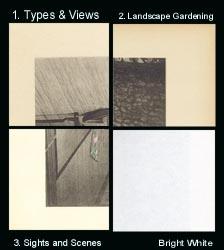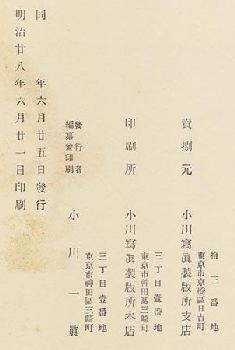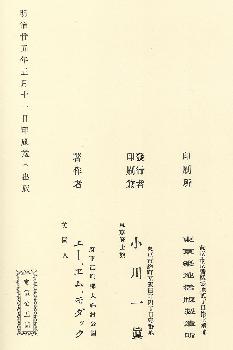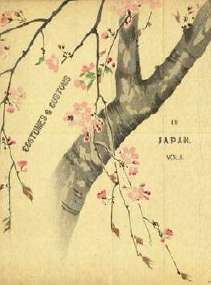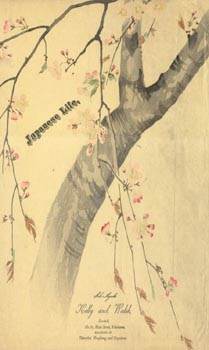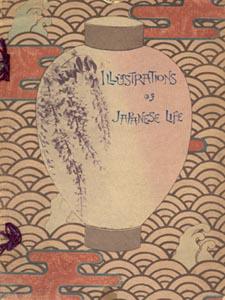Sights and Scenes
|
|
Ogawa, K. (Kazumasa) Sights and Scenes on the Tokaido, By K. Ogawa, Photographer, Tokyo, in Collotype, With Descriptive Text by James Murdoch, M.A., Tokyo, K. Ogawa, 1892 (Meiji 25), Folio (11 3/4 x 16 in - 30 x 40.5 cm), decorated card covers, string ties, spine covered with cloth, 1 page preface, 4 pages introduction, 20 black and white collotype plates, 22 pages of descriptive text, total of 47 pp. The 20 black and white collotype plates contain a total of 44 images. Twelve plates have a single image and 8 plates have 4 images each. Each page is protected by a tissue guard giving the plate number. There is no descriptive text on the plate or tissue guard. The images are based upon photographs by Kazumasa Ogawa, Kusakabe Kimbei, Adolfo Farsari and William K. Burton. Each plate is preceded by a one to two page description of the significance of the image that follows. This is one of the few books of this type with a colophon and, thereby, a precise date of publication. In a page before the introduction, Ogawa states:
I have to acknowledge my indebtedness to Messrs. Kimbei and Farsari for several of the plates in this Volume, and to Professor Burton for one. K. Ogawa.Unfortunately, Ogawa does not attribute any of the 40 individual images in this work to a specific photographer. The four page introduction traces the historic Tokaido (Road of the Eastern Sea) which starts in Tokyo and follows the Pacific coast for 320 miles where it joins the Nakasendo (Central Mountain Road) at Kusatsu. A comprehensive discussion of the Tokaido is found in Anna C. Hartshorne's 1902 book, Japan and Her People Volume 2, Chapter IV, pages 64-89. She illustrates this chapter with the image in the upper right of plate XVI shown below ("Peasants" - a family carrying children). She states that the Tokaido starts at the Sanjo-bashi (Third Street Bridge) in Kyoto and ends at Nihonbashi in Yedo (Tokyo). She described the road in these terms: ... there is no lovelier scenery in the empire, and none in the world, perhaps, so infinitely varied, so crowded with picturesque life, with alternations of mountains and coast and richly cultivated plain. (Page 65, volume 2). Hartshorne's account also includes an extensive discussion of the life of the peasants who lived and worked along the Tokaido. The map at the end of volume 2 of her book traces the Tokaido as well as other major roads in Japan. Covers. The covers on this book are the standard "types and views" covers found on K. Ogawa's collotype books of this period. On the outside they are lithographed in color with a repeating pattern of concentric overlapping half circles, stylized clouds with leaves inside and breaking waves in silver. The inside of the covers have a two color butterfly pattern. Approximately 2 1/2 inches of the head and foot of the spine are covered with a blue cloth fabric. For information on Kazumasa Ogawa and his books, click here.
|
|
Descriptions are Mine Except Quotes Drawn from Text
Plate I. John R. Black in his book, Young Japan, Yokohama and Yedo, A Narrative of the Settlement and the City, from the Signing of the Treaties in 1858 to the Close of the Year 1879, With A Glance at the Progress of Japan During Period of Twenty-One Years (1880-1), describes the Richardson incident and the aftermath at pages 124-144. According to Black's account, the Richardson party was riding horseback from Kanagawa to Kawasaki on Sunday, September 14, 1862. They came upon "norimons and attendants formed in a continuous but irregular train broken at intervals." (at page 124) The Richardson party continued forward into this train and they were attacked and Richardson was mortally wounded. Black also presents a Satsuma version of the incident. According to that account, Richardson recklessly rode through the "train" and when his actions actually endangered one of the norimons (larger size kago) on the road the accompanying guards acted in self-defense. |
|
The Perry Expedition: General Information : Related Books/Pubs The Lithographs: Characteristics : Condition : Listing : Buying Order On-line: Lithograph Price List : Book Price List ABE Book List: BaxleyBooks Inventory on ABE Special Interest Books/Art: ~ K. Ogawa - Color Collotypes and Books/Prints ~ T. Hasegawa - Color Woodblock Books ~ Shimbi Shoin - Art Reproduction Books ~ Tamamura/Takagi, Kobe - Color Collotype Books ~ Georges Bigot - Etchings & Art ~ Keisuke Serizawa - Calendar Folios & Art ~ Woodblock Printing - Process & Miscellaneous Books ~ Japanese Woodblock Prints ~ Blackie the Photographer - Okinawa Photo Essay Books Meiji Era - Japan Views & Images (Price Lists & Information): ~ Albumen Photos : Chromolithographs ~ Colored Albumen Photographs (from Brinkley Books) ~ Stereoviews : Kazumasa Ogawa Collotypes ~ CDV - K. Ogawa : CDV - Other : Cabinet Cards ~ Glass Slides, "Magic Lantern" - Hand Colored ~ Fujiya Hotel, Miyanoshita PayPal Accepted: Pay for Purchases with PayPal Buying Books: Our Book Buying Interests BaxleyStamps: Main Page : Ryukyu Stamps : Japan Stamps Copyright and Fair Use Policy is here.
|
|
If you have material to sell, please visit this page: Buying.
George C. Baxley
Perry Expedition to Japan Books & Lithographs |
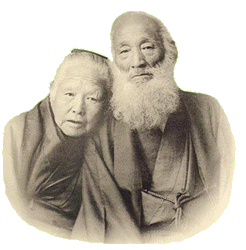
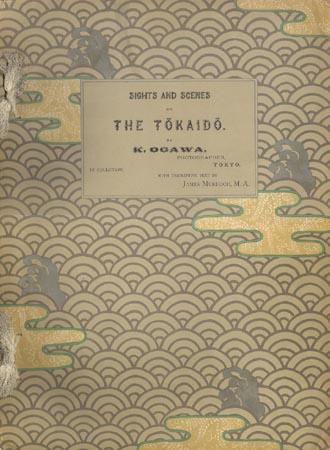
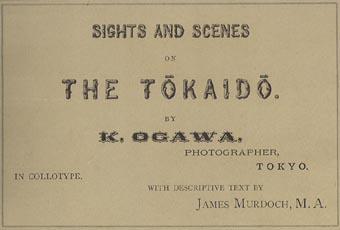
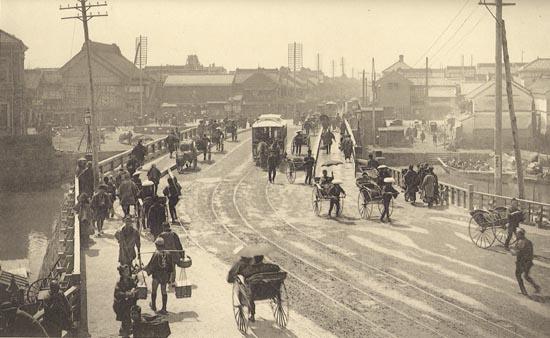
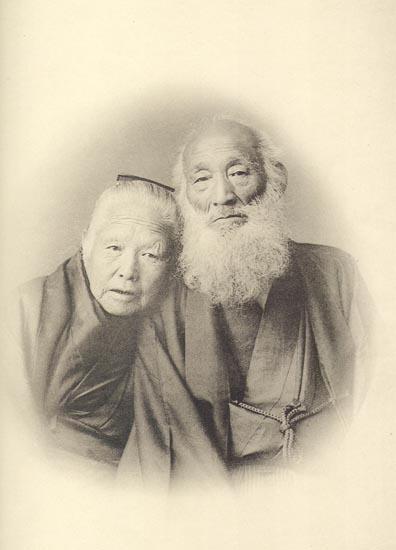
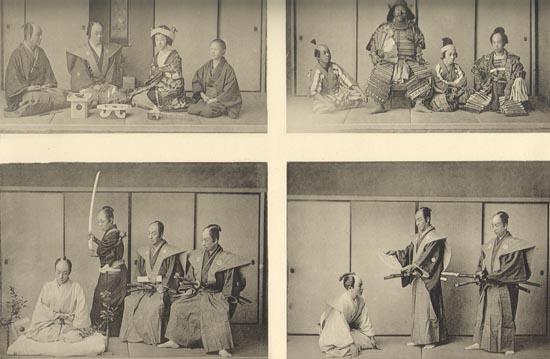
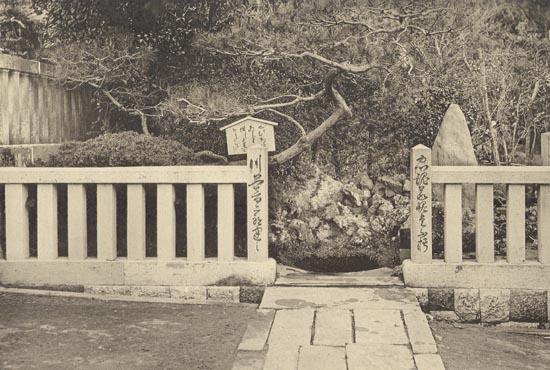
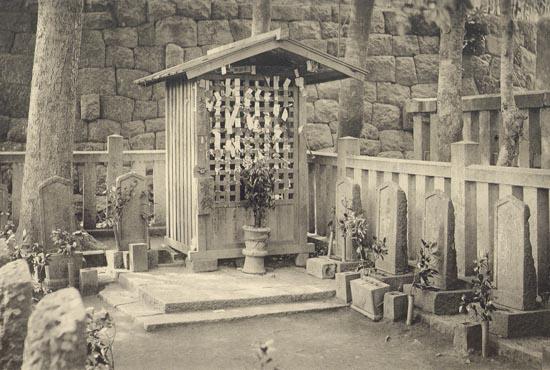
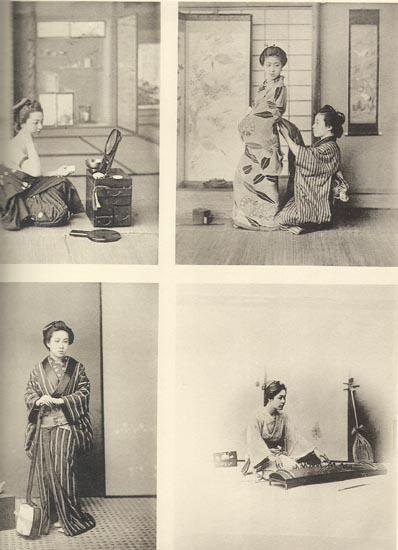
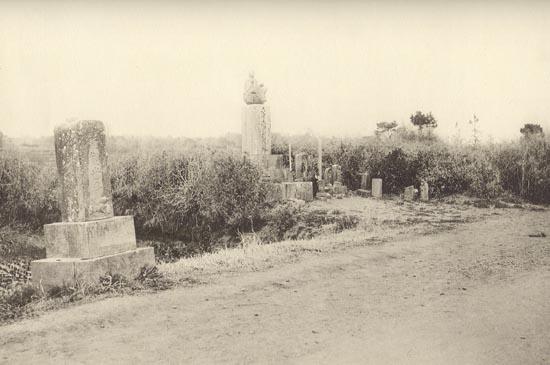
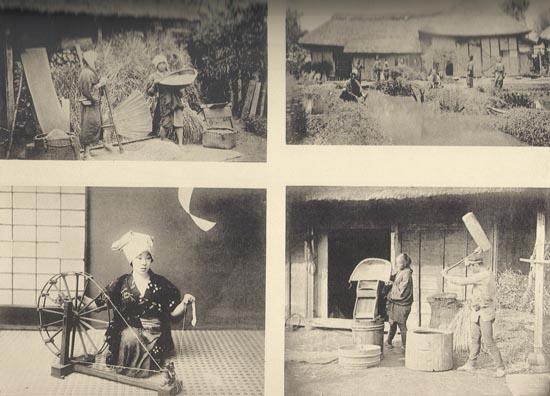
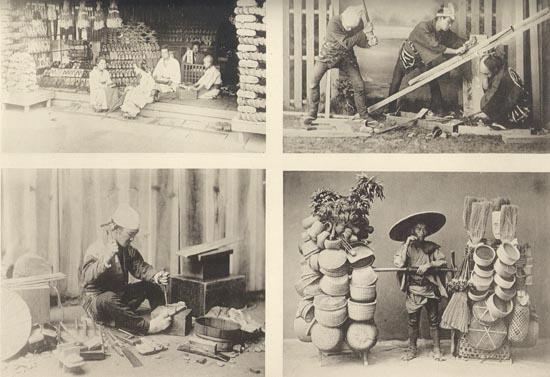
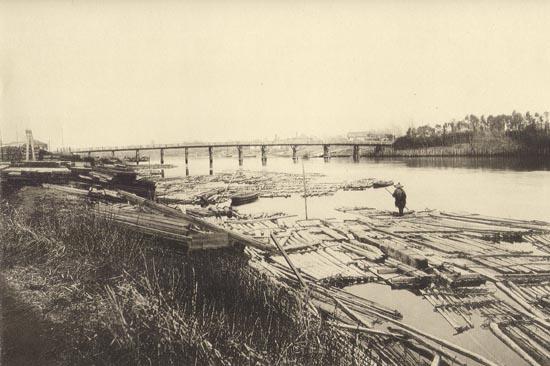
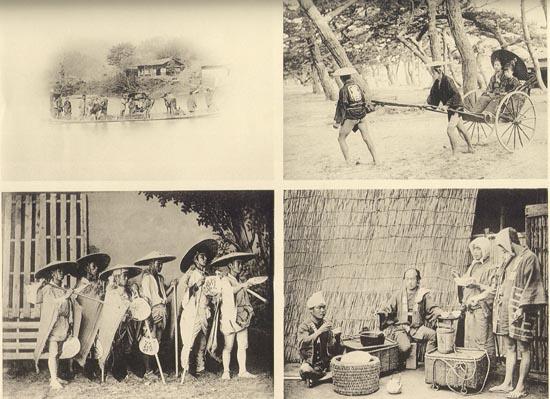
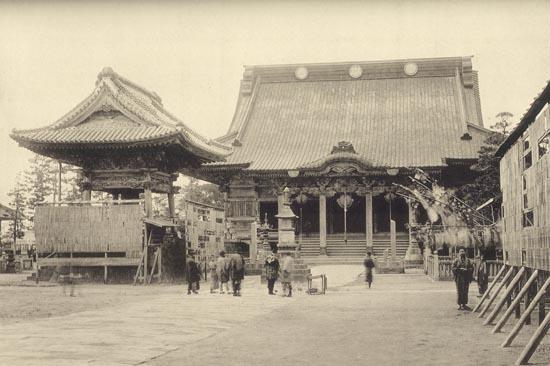
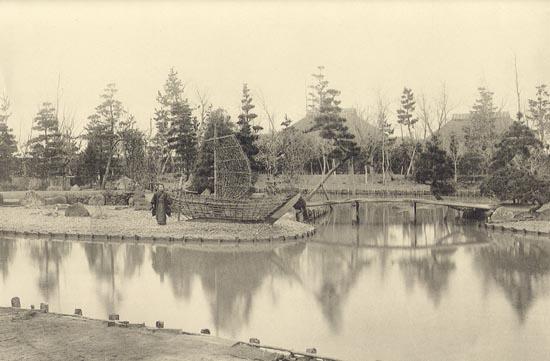
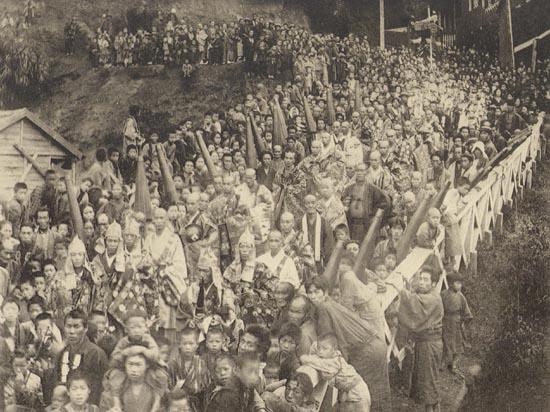
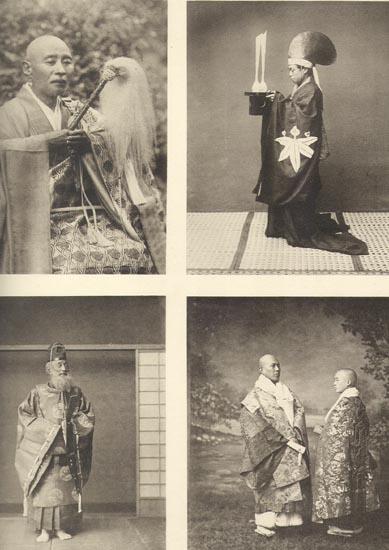
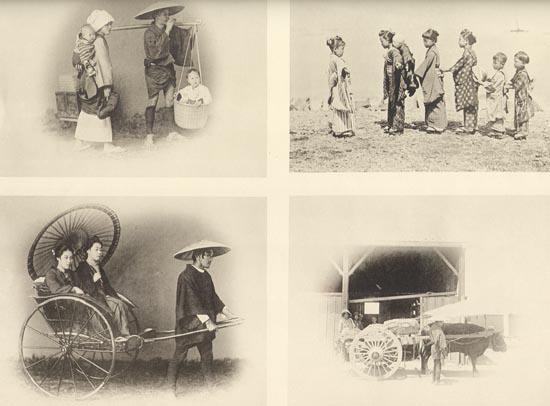
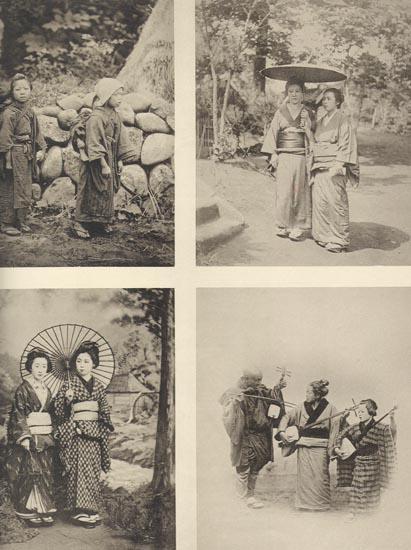
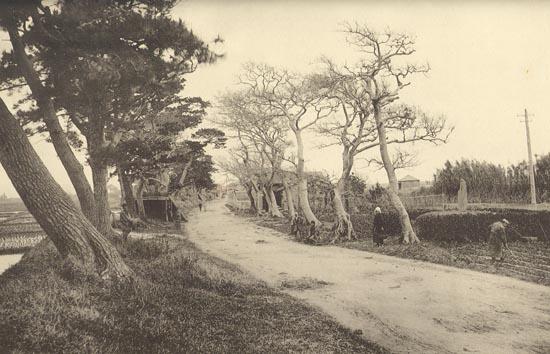
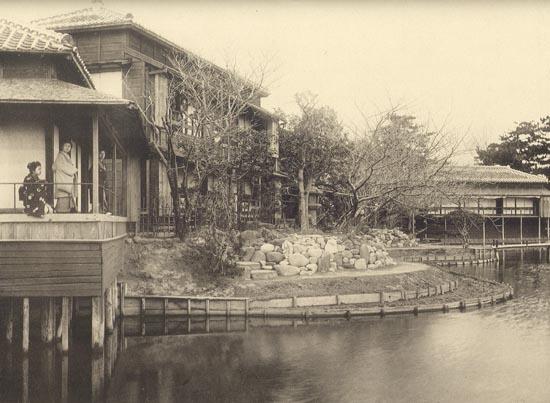
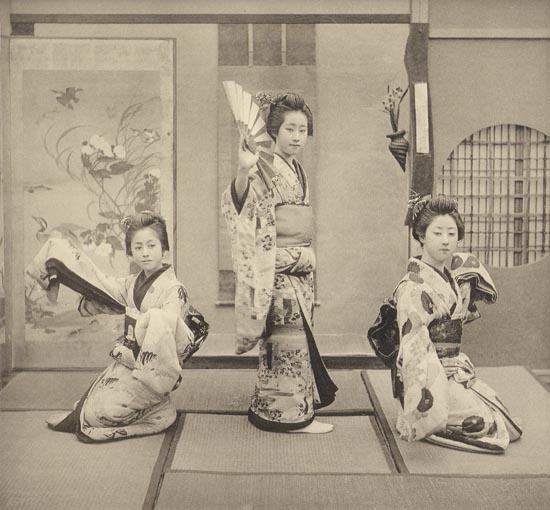
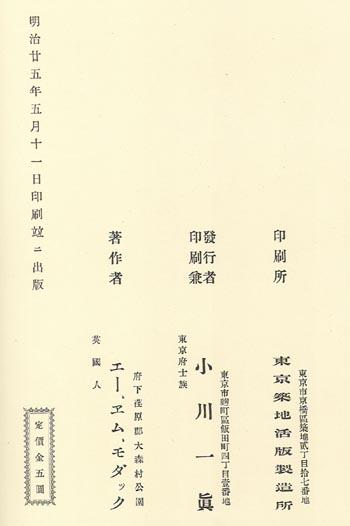

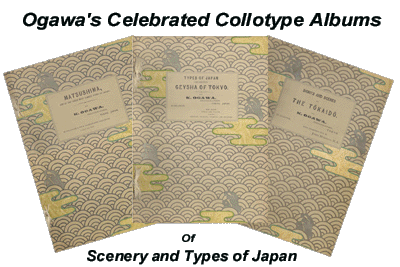
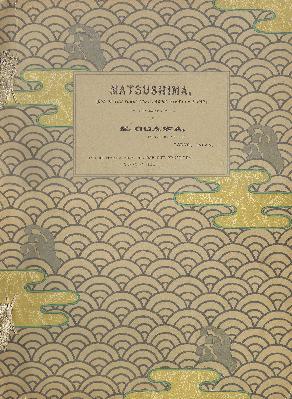
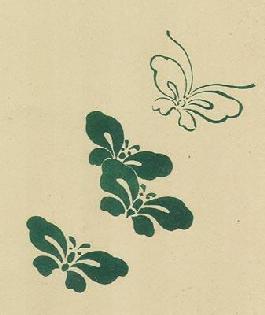
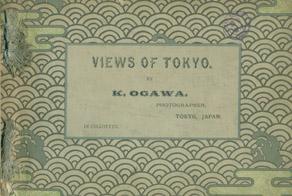
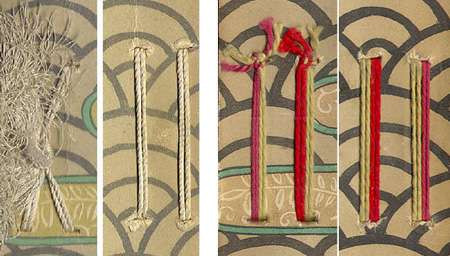
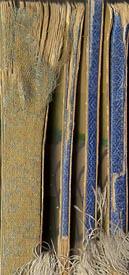
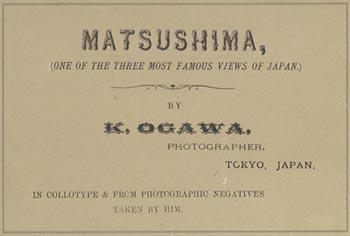
 Types and View books
Types and View books Landscape Gardening Supplement (1893)
Landscape Gardening Supplement (1893)
 Sights and Scenes in Fair Japan (1910)
Sights and Scenes in Fair Japan (1910)
 Bright white paper for comparison
Bright white paper for comparison
